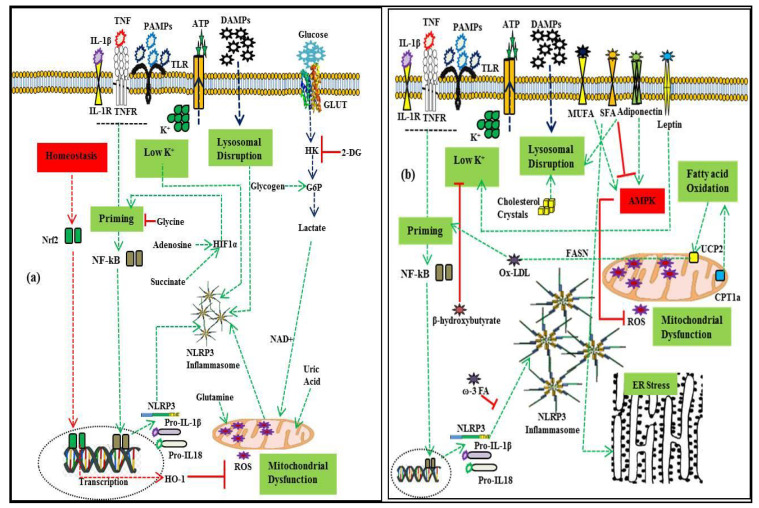Figure 2.
Metabolic regulation of NLRP3 inflammasome activation. (a): Regulation by glycolytic flux and amino acid metabolism. As a part of homeostatic regulation, the priming signal activates nuclear factor erythroid 2-related factor 2 (Nrf2), which promotes heme-oxygenase-1 (HO-1), mitigating the effect of mtROS. Increased production of succinate enhances the transcription of pro-IL1β through hypoxia-inducible factor (HIF-1α). Glycolytic flux promotes inflammasome activation which is inhibited by 2-deoxy-D-glucose (2-DG). Glycine enhances Nrf2-mediated mitigation of inflammasome activity. Glutamine and uric acid enhance it through mtROS. (b): Regulation by adipokines and lipid metabolism. The activity of fatty acid synthase (FASN) promotes priming, while omega-3 fatty acid inhibits inflammasome assembly. Saturated fatty acids promote lysosomal disruption and ER stress, while monounsaturated fatty acids promote AMP-activated protein kinase, which in turn inhibits mtROS production. Cholesterol crystals promote inflammasome activation through lysosomal disruption. Similarly, carnitine palmitoyl-transferase 1A (CPT1A) promotes inflammasome activation, and β-hydroxybutyrate inhibits it by suppressing K+ efflux. Adiponectin acts as an initiator of AMPK-autophagy inhibition of mtROS and K+ efflux, while leptin enhances NLRP3 inflammasome activation. Green lines depict the promotion of inflammasome activation, while red lines depict inhibition.

